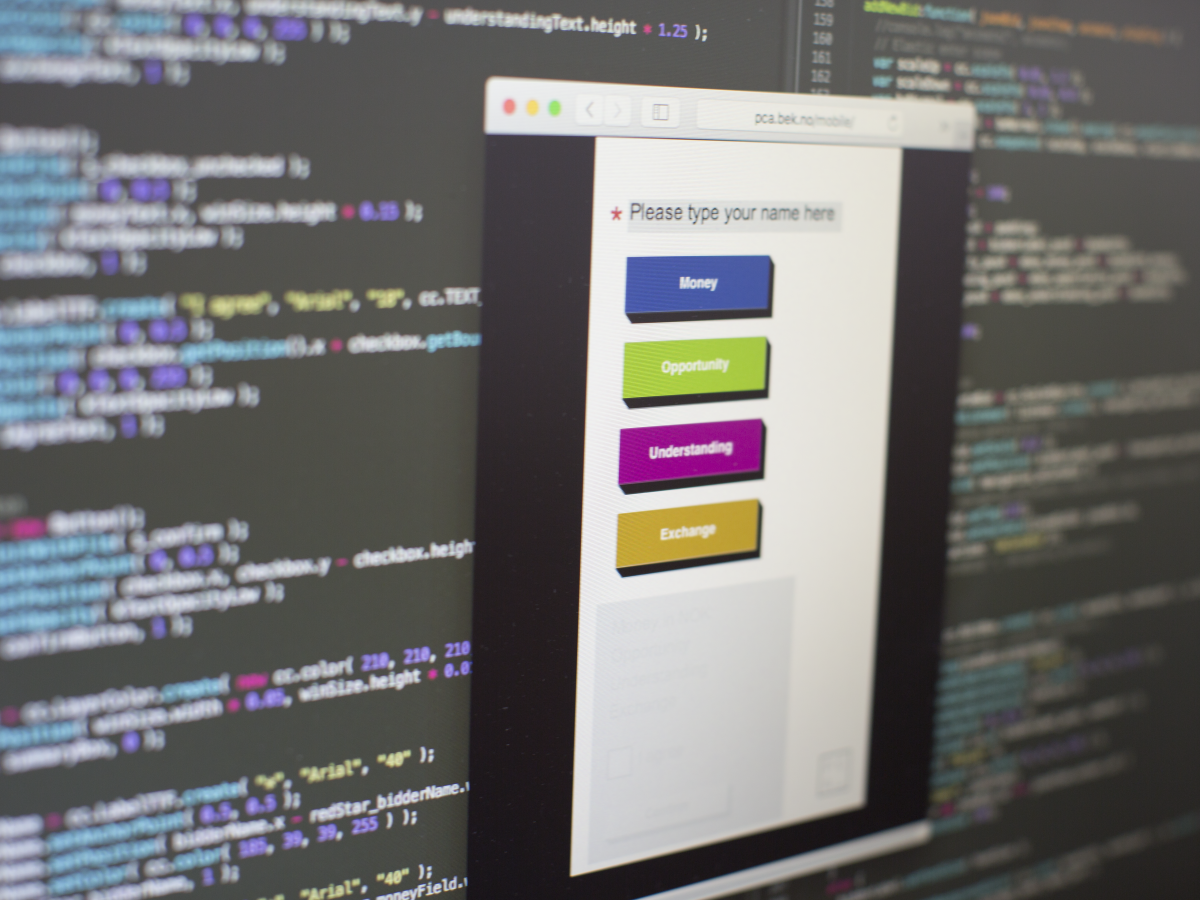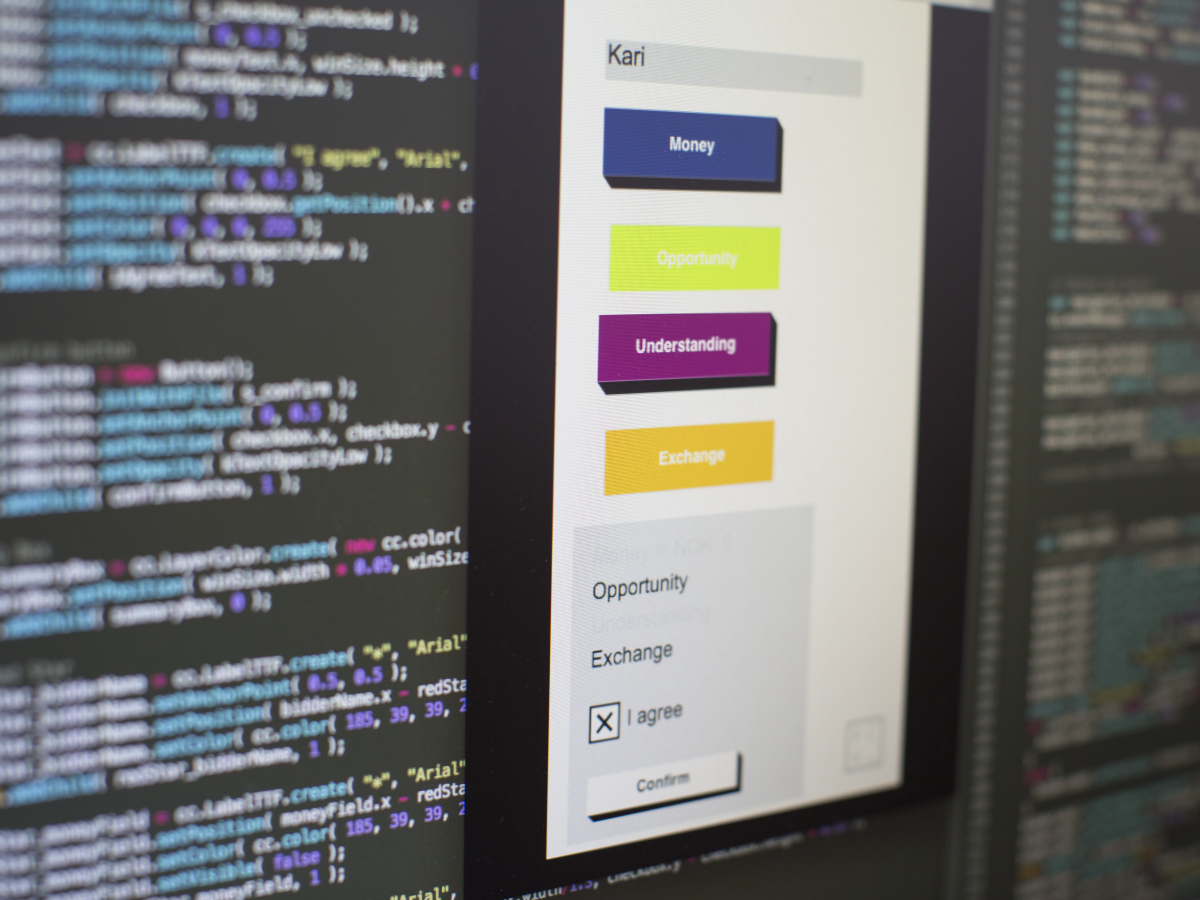The Instrument Makers
Published
The developers at BEK would agree with the idea that they could be compared to an instrument maker when they develop software for artists; although BEK’s intention is primarily to enable artists to develop the instruments themselves.
Written by Grethe Melby for BEK
Translated by Eleanor Clare
– Is it actually this that you need?
This is the first question that BEK’s Stian Remvik asks when an artist approaches him with an idea. When Remvik asks this question, he doesn’t do it to be difficult. He does it to find the best solution that will spare the artist both time and money. Artists rarely have any production budget, and software development takes time.
– For a developer, the challenge is to say “no” early enough. Set the limitations early on, he adds.
An Auction with a Complex Currency
Together with Sindre Sørensen, Remvik is developing the technical solution that will be used during the Post Capitalist Auction. This will be a performative event and an actual auction where 8 artworks by 8 artists will be auctioned off at Landmark.
The work has been commissioned by artists Jingyi Wang and Idun Vik, who are directing the auction. Yet this is an auction where it is not certain that it will be enough to have money to burn. In addition, the artists have made it possible to bid with the currency categories of “Opportunity”, “Understanding” and “Exchange”.
The bidding will take place digitally. Anyone who puts in an offer will be able to do so via their own smart telephone, tablet or computer. BEK’s developers have facilitated it so that the bids are shown instantly on a large screen, visible for everyone present.
So how exactly have BEK’s developers managed to find this solution? And what does the work that the developers do mean in terms of artistic expression?
– We have enjoyed calling it a “game show”, for want of a better word, says Remvik. – We have had hardly any time, so what we have made use of open source coding as our tools. If it hadn’t been possible to find accessible coding from before, we would not have managed to do this with such a tight deadline.
Developing an Instrument
Both Remvik and Sørensen agree that their role in the project could be compared with the role that an instrument maker plays for a musician. How an instrument is built contributes to the resonance and timbre that a musician produces during a concert.
– My job is to create a design; that which has to do with interaction design, explains Remvik. – I studied within the field of design and I work with this in my own art projects.
What Remvik works with is called “front end”, which refers to what the audience see as soon as they interact with the solution.
Sørensen works with the software on the server, which is essential for everything to work together.
– It is my responsibility to manage the underlying operations logic and how the system works during the auction, explains Sørensen. – It’s my job to make sure that nothing falls apart or freezes: then we’d be risking that the bids didn’t go through. If something goes wrong, there would be the risk that the whole auction breaks down. That would ruin the whole experience.
Close Collaboration is Important
To tie everything together, the developers are used to close collaboration:
– If something doesn’t work, we have to see if there is something in my programming which is causing the problem, or if it’s something in Sindre’s coding, explains Remvik.
In addition, it is always necessary to collaborate closely with the artists. For the developers, it is essential that they have a solid understanding of what the artist is aiming at. Simultaneously, the developers need artists to understand what the technology can do – and cannot do.
– We just found out that the artists had imagined doing a live stream of the auction. That’s something which opens up a whole other set of questions, smiles Sørensen, knowingly. – Then we got the question, “can the people who are watching the stream join in the auction?” The artists decided that they did not want this to be the case, so we had to add a barrier so that those watching via live stream would not be able to take part.
– The idea is that you have to be there, because once you have put in a bid, you need to be able to discuss it, adds Remvik. – To be able to decide whether a bid with money is worth more than the bids people offer with understanding, or with the intention of swapping something, one must be physically present. Then one can pause the auction, in order to get a negotiation going. The software has been designed to that one uses a representation for the bid. After all, it is a theatre piece: a staging. The artists are actors by profession, so they look at it as a performance. But it is also an actual auction. I believe that they were considering having a solicitor present, to add another layer of reality, even though it’s also important that it is a theatre production.
Between Specification of Requirements and Experimentation
The developers are always keen to get a good understanding of the project. Without this, it can be difficult to draw up a specification of requirements.
– A requirement specification is something one uses to decide how long it will take to develop the work. It’s here that time is money, explains Sørensen.
Both Sørensen and Remvik underscore that the more an artist knows about technology, the greater the chance that the requirement specification will be good. To make up a specification of requirements is not simple with regard to the creative process.
– Often there is no good specification of requirements, says Sørensen. – This can make the process more challenging.
– But it’s necessary to begin somewhere, adds Remvik. – One has a specification, which one must have, and so one begins, just to get going. Then it’s really important to test the work out on people who don’t know what it is. That’s a totally essential part of the process, and these artists have understood that, notes Remvik. – It would be totally impossible to make the specification, then make it, and then it’s done. People always do things that you can’t predict, and different people do totally different things. So it’s about leading the audience so that they do what you want them to do, and don’t do what you don’t want them to. That’s why setting limitations is important: so that it’s not possible for the audience to do anything else other than what one wants them to do during the performance.
– Now we use modern software architecture which is called model-view-controller MVC, which many programming projects use to get a clear division between the way that things appear to the user and the data provider, between the widget that delivers the data and the one that presents it, adds Sørensen. Whatever we make, it has to be suitable for different devices. The data-structure logic and the way it’s presented must work together.
Artists Benefit from Understanding Technology
– To understand how technology works is often difficult, says Remvik. – But you need a certain amount of insight regarding your tools. If you work with paint, then you must also understand brushes. You need to have a certain amount of understanding for your tools, even if you don’t need to actually make your own brushes. To have experience for finding the right paintbrush, for finding the right tool – that’s something all artists should be able to do. It’s this that we here at BEK can facilitate. First and foremost we advise artists to do things for themselves. The idea is that they themselves will manage to find out what they need in the way of instruments and tools. At BEK, can artist can gain insight into how something is made, what can be found, and what is possible.
Even so, now and then, Remvik and Sørensen can help to make something new:
– I think that it’s fun to be involved in art projects, says Sørensen. – Some of the joy of doing it is that it’s basically open, and that I can help to realise something that might seem a bit airy at the beginning. The task is to find new solutions, to create something that hasn’t been done before. And that’s not always crystal clear from the start. One has to be willing to search for solutions along the way, if they aren’t already available.
– It’s a real craft to create something that hasn’t been done before, says Sørensen.
If they had made something that had been made before, it would have been a swindle. They are both agreed about that.
Photo: Stian Remvik

